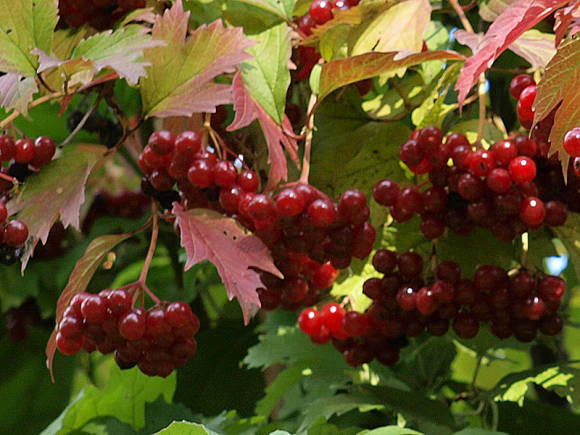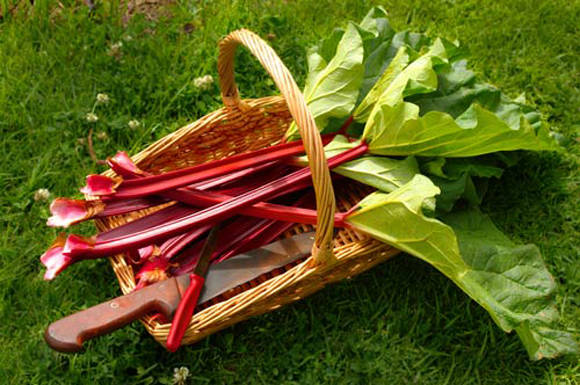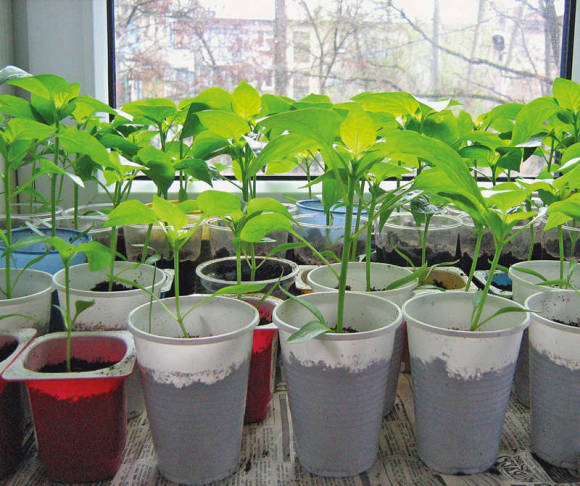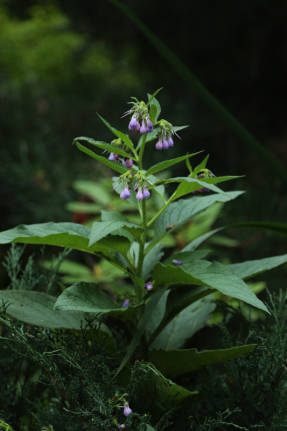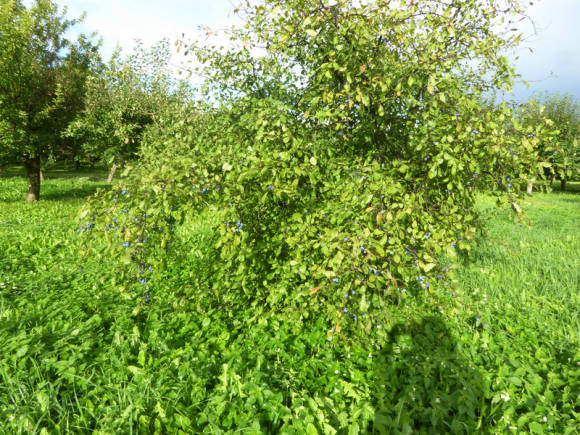 A well-planned network of footpaths in a garden area is an important part of creating a beautiful and comfortable garden. We walk along them, enjoying the beauty of the garden, we carry a wheelbarrow along them or we walk with a bucket and a shovel at the ready. The paths are main, walking and secondary, working. Depending on the purpose, we will build them from different materials. The dimensions of the garden dictate their width: the paths of the main route are from 0.8 to 1.5 m, the auxiliary ones are from 0.4 to 0.8 m, the optimal width is 0.6 m.
A well-planned network of footpaths in a garden area is an important part of creating a beautiful and comfortable garden. We walk along them, enjoying the beauty of the garden, we carry a wheelbarrow along them or we walk with a bucket and a shovel at the ready. The paths are main, walking and secondary, working. Depending on the purpose, we will build them from different materials. The dimensions of the garden dictate their width: the paths of the main route are from 0.8 to 1.5 m, the auxiliary ones are from 0.4 to 0.8 m, the optimal width is 0.6 m.
The pattern of the paths can be built on geometric or free landscape lines; a reasonable play of contrast between the forms of strict geometry and smooth lines is also acceptable, for example, a combination of straight and pictorial lines, diagonals, circles, etc.
Paths and paths divide the site into different zones and at the same time unite the garden into a single space. This is achieved not only by the general pattern of the paths, but also by the use of carefully selected paving materials. There are several rules for the selection and use of decorative materials that are applicable not only for creating a network of paths in the garden, but also for any other design work in our environment.
Rule 1. In the paving of paths that adjoin the house, the material used in the decoration of the house itself, be it a facade, a basement or a porch, should be involved. That is, the same material should move from the vertical plane of the house wall to the plane of the garden and spread over it, which greatly enhances the feeling of the overall space of the entire estate. In the paving of the local area, this material should not dominate, otherwise the house and the garden will visually merge. It usually occupies about a third of the paving area.
 Let's analyze a fairly common option. The house is built of red bricks, has white window frames, concrete blind area and a porch. It would be appropriate to decorate the front area with paving of concrete paving slabs, connecting it with a pattern of clinker bricks. The light gray color of concrete mutes the brightness of red brick, makes it calmer and more pleasant to perceive, harmonizes with the white color of the window frames, which, in fact, also work to smooth out the color of the walls. In this case, we choose clinker brick because it is close to natural stone in strength, while ordinary brick in paving is fragile, it starts to crumble rather quickly, especially if it is laid flat, and not placed on the edge. But there can be a great variety of combinations and patterns of clinker and concrete tiles, just try to choose clinker and concrete tiles of more or less the same size. In this case, the paving of mixed materials will be stronger.
Let's analyze a fairly common option. The house is built of red bricks, has white window frames, concrete blind area and a porch. It would be appropriate to decorate the front area with paving of concrete paving slabs, connecting it with a pattern of clinker bricks. The light gray color of concrete mutes the brightness of red brick, makes it calmer and more pleasant to perceive, harmonizes with the white color of the window frames, which, in fact, also work to smooth out the color of the walls. In this case, we choose clinker brick because it is close to natural stone in strength, while ordinary brick in paving is fragile, it starts to crumble rather quickly, especially if it is laid flat, and not placed on the edge. But there can be a great variety of combinations and patterns of clinker and concrete tiles, just try to choose clinker and concrete tiles of more or less the same size. In this case, the paving of mixed materials will be stronger.
Rule 2. The farther from the house, the less elements of house decoration are used in the pattern of the path. Suppose the path near or around the house will be laid out of concrete paving slabs with the inclusion of clinker or finishing the side line from it.  Then we will switch to paving only with concrete slabs, perhaps of a different size or shade with rare clinker inlays, and later, as we move into the forest area, we will finally remove the clinker from the paving, reduce the proportion of concrete slabs and introduce gravel backfill. In some areas of the path remote from the house, you can make gravel backfill with the inclusion of separate concrete slabs of different tone. As you move deeper into the forest, concrete can completely disappear from the road surface.
Then we will switch to paving only with concrete slabs, perhaps of a different size or shade with rare clinker inlays, and later, as we move into the forest area, we will finally remove the clinker from the paving, reduce the proportion of concrete slabs and introduce gravel backfill. In some areas of the path remote from the house, you can make gravel backfill with the inclusion of separate concrete slabs of different tone. As you move deeper into the forest, concrete can completely disappear from the road surface.
However, the materials with which we lay out the paths near the house will reappear when on the forest path we meet a bench in a small resting area or a fountain with cool water.We can pave such a site with concrete paving slabs with a clinker pattern, reminiscent of the paving of the local area, but simpler. Or we can simply make gravel backfill all over the site and surround it with one or two rows of clinker. Here, the opposite solution is also possible: if the brick walls of the house and the fence are left at a distance, then brick can be put in the basis of the paving, and concrete slabs or gravel backfill can be introduced only as a small memory of the path traveled.
Thus, the combination of carefully selected paving materials is an effective technique that unites the entire composition of the garden. Moreover, in each zone of the garden, paving must correspond to the purpose and style of the zone itself, whether it be a forest gazebo or an economic site.
Secondary or utility paths in the garden can be made of paving concrete tiles measuring 30x30 cm, laid in two rows, or two types of tiles, for example, two tiles measuring 25x25 cm are laid out in the first row of the path, and in the second row only one tile measuring 25x50 cm, and these rows alternate. If you want to reduce the width of the secondary track, then the tiles of 25x25 cm in the first row are laid out side by side, as in the previous version, and the same tile is placed in the next row, but in the middle, etc., that is, the tiles are laid according to the principle of brickwork, when one upper brick lies on two lower ones. The last two tiling options do not have cross joints.
It is worth dwelling on this method of paving in more detail. Most of the sites in the Moscow Region are located on watered medium and heavy loams. The soil is constantly saturated with water, which does not go away. With the onset of frost, the water in the soil freezes and, as is known, expands. The soil expands accordingly. Such soils are called heaving, they cause a lot of trouble for builders, and landscape designers, and site owners. It is clear that such soils can lift tiles laid in a path, and it is the tiles with cross-shaped joints that are most easily lifted, and paths with other types of joints are deformed to a lesser extent.
 There are a sufficient number of developed types of layout of rectangular tiles. The most decorative is the so-called Roman masonry, in which tiles of several sizes are used, they are laid out in a free pattern, but without cross-shaped seams. In Western Europe, this type of masonry is extremely popular and is made of rectangular and square stone slabs.
There are a sufficient number of developed types of layout of rectangular tiles. The most decorative is the so-called Roman masonry, in which tiles of several sizes are used, they are laid out in a free pattern, but without cross-shaped seams. In Western Europe, this type of masonry is extremely popular and is made of rectangular and square stone slabs.
Secondary paths can be laid out using the step path technique, when the slabs are laid with gaps corresponding to the length of the step. The gaps between the slabs are filled with turf or loose decorative materials. It is convenient to walk along such a path, a wheelbarrow can be transported along it, while the lawn does not suffer.
Rule 3. In the design of paths and areas in the garden, you can use no more than three different, but combined materials and no more than two or three of their shades. Moreover, the methods of arranging these materials can be very diverse. Indeed, the monotony and monotony of paving must be broken by interspersing tiles that are different in tone, texture, or by introducing green islands of unpretentious ground cover plants that are resistant to trampling, which look great on paving.
From these rules, it becomes clear that materials for the decorative and functional design of the site cannot be chosen randomly.
Another standard option that requires the selection of completely different materials is a wooden house, and it can be an old country house, or a house on a garden plot, or a modern cottage made of glued or rounded timber. In this case, one of the materials for decorating the site will be a tree.These are all kinds of floorings, walkways, boards of various sizes, garden parquet, step-by-step paths from saw cuts of various sections and diameters, tinted timber and just old railway sleepers sunk into the lawn or gravel backfill and, finally, decorative backfills from bark and chips.
Wood as a material for creating paths is not yet often used in our garden design. Natural stone is usually preferred. However, it is wood that is the main building material, not such an unambiguous leader in garden improvement. There is no rock outcrop in the nature of the Moscow Region, therefore, the excessive use of stone in decorating gardens is not entirely natural.
Tinted wood is beautiful, durable, environmentally friendly, pleasant to the touch, quickly gains heat from the sun, dampens footsteps and makes pedestrians look under their feet and admire the simplicity and naturalness of the material familiar to us from childhood. We all remember the picket fence of grandmother's fence, silvery-gray from the bad weather, but it will only stir up long-forgotten memories of low-rise dachas of the same type with carved platbands, painted shutters and an octagonal attic window in old summer cottages left in a bygone era ... And in other countries, progressive designers artificially age, bleach the wood, giving it exactly that unique silvery-gray shade, using tints that are complex in composition, or specially expose garden furniture in gardens without any protective coatings and wait several years for it to acquire exactly the same shade ...
 Long-term use of wooden decks and walkways in the open air is possible subject to a number of rules. Firstly, you can purchase products from Western companies that produce wood-based materials with a ribbed non-slip surface, from which decks, patios, walkways and square boards are made, placed in step-by-step order. They are extremely durable, as antiseptics are driven into this wood under high pressure in the factory. However, such wood is very expensive. Of the available species, we can name larch. It is durable but not cheap. Oak for such purposes is not suitable for everyone, since it is also expensive, and it lasts no longer than pine. Most consumers buy pine. With proper wood processing and preventive maintenance, such floorings can withstand 8-10 years without major repairs. Planks 15-30 mm thick and 200-250 mm wide are usually used for decking. The entire surface of the wood is treated with an antiseptic, and those parts that will come into contact with the ground are covered with bitumen. Decks and walkways must be kept constantly ventilated, i.e. raise it above the ground by placing it on its legs. The legs are a bar with a section of 40x80 mm. Of course, the legs are treated with bitumen. Usually wooden walkways are two planks connected by transverse strips and set on legs. A gap of 20-25 mm is left between the boards, which contributes to additional ventilation. The surface of the boards must be well processed, parts of the walkways are connected using galvanized bolts with sunken heads. On such a flooring you can walk barefoot without fear of injury. It dries quickly and heats up under the sun, gives pleasant warmth to the feet. Garden elements made of wood require annual treatment with antiseptic agents, if possible, it is advisable to remove them for the winter indoors. Such bridges are located on gravel backfill. They are often slung across a dry stream, led from one wooden deck to another, and are widely used in natural or natural gardens. Wooden boards and walkways often lead to water bodies and even go out on supports on the surface of the pond.
Long-term use of wooden decks and walkways in the open air is possible subject to a number of rules. Firstly, you can purchase products from Western companies that produce wood-based materials with a ribbed non-slip surface, from which decks, patios, walkways and square boards are made, placed in step-by-step order. They are extremely durable, as antiseptics are driven into this wood under high pressure in the factory. However, such wood is very expensive. Of the available species, we can name larch. It is durable but not cheap. Oak for such purposes is not suitable for everyone, since it is also expensive, and it lasts no longer than pine. Most consumers buy pine. With proper wood processing and preventive maintenance, such floorings can withstand 8-10 years without major repairs. Planks 15-30 mm thick and 200-250 mm wide are usually used for decking. The entire surface of the wood is treated with an antiseptic, and those parts that will come into contact with the ground are covered with bitumen. Decks and walkways must be kept constantly ventilated, i.e. raise it above the ground by placing it on its legs. The legs are a bar with a section of 40x80 mm. Of course, the legs are treated with bitumen. Usually wooden walkways are two planks connected by transverse strips and set on legs. A gap of 20-25 mm is left between the boards, which contributes to additional ventilation. The surface of the boards must be well processed, parts of the walkways are connected using galvanized bolts with sunken heads. On such a flooring you can walk barefoot without fear of injury. It dries quickly and heats up under the sun, gives pleasant warmth to the feet. Garden elements made of wood require annual treatment with antiseptic agents, if possible, it is advisable to remove them for the winter indoors. Such bridges are located on gravel backfill. They are often slung across a dry stream, led from one wooden deck to another, and are widely used in natural or natural gardens. Wooden boards and walkways often lead to water bodies and even go out on supports on the surface of the pond.
The same rules apply to the construction of a path from wood ends.Usually, the bars are cut into a length of 15-20 cm, impregnated with an antiseptic, the part that will be in the ground is treated with bitumen and installed in the road bed on a layer of compacted sand. The gaps between the segments are filled with sand and compacted. In large gaps, you can hammer in pieces of a smaller diameter, having previously sharpened the lower end. You can decorate the gaps with bark or wood chips.
When working with scraps of wood, you can use the following technique: in a predetermined place, not short scraps are buried, but elements with a length of 0.5 m - such protruding processed logs can serve as seats or support for a bench on a walking forest route. If you deepen a group of logs with a height of 1.0-1.5 m, then you can get a decorative wall or garden sculpture, organically inscribed in the plane of the path and, as it were, "growing" out of it.
Despite the fact that decorative wood materials are quite diverse, it is not entirely correct to use only them when decorating a plot with wooden buildings, especially if the plot is large enough. Wood materials go well with natural stone, with gravel backfills in warm colors, with artificial tinted concrete and porcelain stoneware tiles.
Nina Tomilina,landscape architect(Based on the materials of the magazine "Herald of the Florist", No. 3, 2005)

